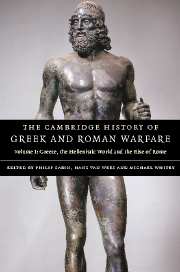
- Cited by 1
-
Cited byCrossref Citations
This Book has been cited by the following publications. This list is generated based on data provided by Crossref.
Kaikkonen, Tuukka and O’Driscoll, Cian 2023. Heritage and War. p. 12.
- Publisher:
- Cambridge University Press
- Online publication date:
- March 2008
- Print publication year:
- 2007
- Online ISBN:
- 9781139054157
- Subjects:
- Ancient History, Classical Studies
- Collection:
- Cambridge Histories - Ancient History & Classics


